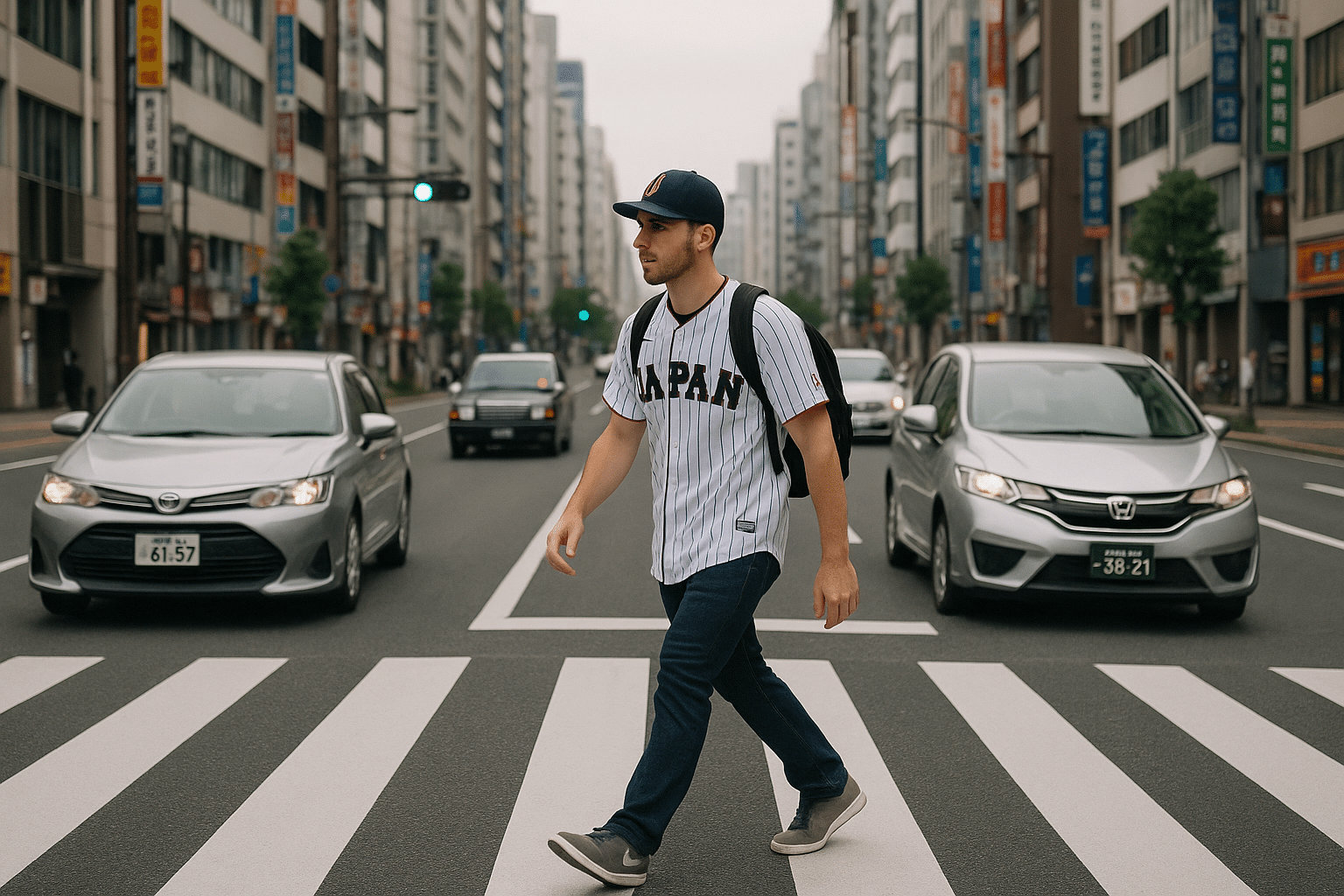
Staying Safe on Our Japan Tours
I find Japan to be clean and safe, and the people gracious. The risks of contracting an illness or becoming a victim of crime are relatively low. These are all reasons why Japan is a wonderful country to visit.
However, it is still important to take precautions to ensure a safe trip. In my opinion, the most significant risks when traveling in Japan are:
- Pedestrian accidents: trip hazards and car/bicycle traffic
- Dehydration during the summer months
- Natural disaster
Let’s talk about how to prevent any mishaps and what to do in a worst-case scenario.
Be Very Careful When Walking
We don’t ever need to hurry. If we’re walking as a group and you pass whoever is leading the group at the time, then you’re walking too fast.
Japan has a confluence of factors that make tripping a real possibility:
- They don’t have the lawsuit culture that the US does, meaning that trip hazards are common. Sidewalks may be uneven, or a step might be bigger or smaller than you are used to. And we walk a lot on our tours, so you will encounter these things.
- The sights can be mesmerizing, distracting your awareness.
- Things may not be where you think they are – a recessed seating area where you expect there to be a floor, for example. Or there might be hazards that you don’t expect – a tiny step into your hotel room’s bathroom can be an unwanted nighttime surprise.
- Generally, we are larger than the Japanese, and things are smaller and more crowded in Japan’s cities compared to ours.
So, be mindful of your surroundings and take your time.
And I haven’t even mentioned the big one yet – they drive on the other (left) side of the street and sometimes have unique diagonal traffic patterns. Be cautious when crossing the street and always wait for the traffic light – there is no jaywalking in Japan! When you cross the street, look both ways: right, then left, then right! Cars will be coming from directions that you’re not accustomed to being aware of.
To top it off, bicycles ride on the sidewalk. So be sure to look behind you before turning left, right, or otherwise altering your walking course, lest you be hit by a bicyclist from behind.
Stay Hydrated
Japan’s weather is very hot and humid – “oppressive,” according to this chart – in the summer months. Furthermore, on our tours, we are exposed to the elements more often than you probably are at home and do a lot of walking (guests frequently report step counts exceeding 10,000), including up and down stairs, due to our use of public transportation.
That combination of weather and exertion, along with jet lag and lack of sleep, forms a potentially dangerous recipe for dehydration. Be proactive in staying hydrated and cool!
Here are our tips to prevent dehydration and exhaustion:
- Drink lots of water! Water is best, but Pocari Sweat, Japan’s version of Gatorade, is also a good option. If you wait until you’re thirsty, it’s too late – start your day with a good amount of water and maintain a consistent fluid intake throughout the day.
- Take a break when you need one. Don’t hesitate to ask for some time to rest or skip something altogether – no activity on our itinerary is mandatory.
- Consider purchasing accessories such as a neck cooler or personal electric hand fan.
Resources to Prepare for the Worst
- American citizens may want to enroll their trip in the STEP program with the US Department of State. Non-American tour guests should look into the equivalent for their home country.
- Check the latest information on Americans traveling to Japan from the Embassy and the Department of State.
- Consider downloading the Safety Tips App created by the Japan Tourism Agency.
In Case Something Bad Should Occur on Our Tour
If you’re not with the group at a game or outing during a natural disaster or other emergency, make your way to the hotel if and when it is safe to do so, or proceed to the nearest shelter if advised to do so by local authorities. You will have detailed itineraries with map links and transit routes identified. We recommend that you also carry a hotel card.
You have the phone numbers and contact information of your tour staff listed on your itinerary. Contact the tour staff as soon as possible to advise them of your status. Tour staff in the US and Japan will endeavor to account for all tour guests and share information with the emergency contacts provided by guests as needed.
Local emergency numbers:
- Ambulance – 119
- Fire – 119
- Police – 110
An American citizen with a serious emergency in Japan can call the Embassy at 03-3224-5000 (+81-3-3224-5000 from the US).
Canadian Embassy: 03-5412-6200 (+81-3-5412-6200 from Canada).
You can also call the Japan National Tourism Organization Visitor Hotline for info or assistance in the case of an accident or emergency: 050-3816-2787 (+81-50-3816-2787 from the US). The JNTO consolidates various useful numbers on this page.


